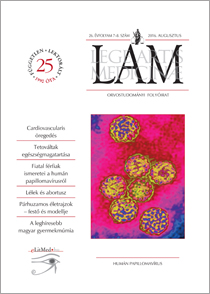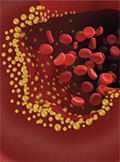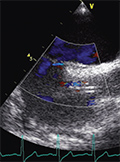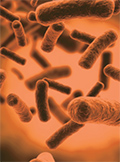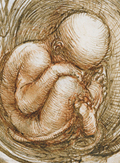The eLitMed.hu medical portal uses computer cookies for convenient operation. Detailed information can be found in the Cookie-policy.
Lege Artis Medicinae - 2016;26(07-08)
Content
[Silent spring]
[8th of August was this year's Overconsumption Day; it is a model calculation of when humanity will use up the total global biocapacity for a given year. The data series and calculation methods are available for anyone to download from the Global Footprint Network website. We...]
[Cardiovascular aging]
[The world population in both industrialized and developing countries is aging. The clinical and economic implications of this demographic shift are staggering because age is the most powerful risk factor for cardiovascular diseases. The incidence and prevalence of hypertension, coronary artery disease, congestive heart failure, and stroke increase steeply with advancing age. Although epidemiologic studies have discovered that some aspects of lifestyle and genetics are risk factors for these diseases, age, per se, confers the major risk. There is a continuum of age-related alterations of cardiovascular structure and function in healthy humans, however these alterations are not synonymous with diseases processes. Old age is not a disease. Although cardiovascular aging changes are considered “normative”, they lower the threshold for development of cardiovascular disease, and appear to influence the steep increases in hypertension, atherosclerosis, stroke, left ventricular hypertrophy, chronic heart failure, and atrial fibrillation with increasing age. Specific pathophysiologic mechanisms that underlie these diseases become superimposed on cardiac and vascular substrates that have been modified by an “aging process”, and the latter modulates disease occurrence and severity. Age-associated changes in cardiovascular structure and function become “partners” with pathophysiologic disease mechanisms, lifestyle, genetics, and other presently unknown factors in determining the threshold, severity, prognosis, and therapeutic response of cardiovascular disease in older persons. However, the role of specific age-associated changes in cardiovascular structure and function in such age-disease interactions has not been considered in most epidemiologic and clinical studies of cardiovascular disease. Quantitative information on age-associated alterations in cardiovascular structure and function in health is essential to unravel age-disease interactions and to target the specific characteristics of cardiovascular aging that render it such a major risk factor for cardiovascular diseases. Such information is also of practical value to differentiate between the limitations of an older person that relate to disease and those that might be expected, within limits, to accompany advancing age or a sedentary lifestyle.]
[Defending the statins]
[Taking into account the frequent occurrence of coronary heart disease and the mortality related to this, it is obvious that the primary and secondary prevention of cardiovascular events is nowadays a major challenge in medicine. The lipid lowering therapy has become the basic element of the prevention and the statins are first-choice drugs in this field. Despite the great amount of the evidences coming from studies based on the principles of the evidence based medicine, the statins are frequently in the crossfire of undeserved offensives. The unexplainable reluctance to statins is frequent not only among the misled patients but among doctors too. The attitude of the latter to the treatment determines the patients’ compliance. The change of this attitude is the aim of this paper. This potential change and the continuous education of the patients are the most common possibilities for the improvement of the bad statin persistence and adherence. ]
[Health behavior of tattooed persons]
[INTRODUCTION - In post-modern societies tattoo has become decidedly fashionable as acceptance have replaced negative attitudes towards it. We assume that body decoration is a fashion-conscious behavior in the present Hungarian society and thus their lifestyle and risk behavior would not differ from the average of the Hungarian population; also, that there would be no gender differences in the motivations of having a tattoo nor in the messages communicated by tattoos. SAMPLE AND METHOD - Information on tattooed persons was collected on the Internet. The online questionnaire was completed by 508 persons. For processing the data we used the SPSS PC statistical software package. RESULTS - The majority of our sample was under 35 years of age. Respondents have an average of 5-7 tattoos. The most preferred body parts for tattooing are the arms and legs. The primary motivations for having a tattoo are self-expression and the need of commemorating emotions and events. There are significant differences between the characteristics of tattooing of men and women, however, these differences are not related to the social body. The eating habits of men and women are similar; the average number of meals per day is higher than three; the majority of the respondents eats healthy foods and chose their food consciously. They exercise 4-5 hours per week. The proportions of the overweight and the obese are far greater than the nationwide age averages. More than half of the respondents are active smokers. The estimated proportion of heavy drinkers is especially prominent among the tattooed women. SUMMARY - The motivational background and message communication support our assumptions that tattooing is fashion rather than a deviant behavior. The tattooed persons in our sample are health conscious regarding sports and exercise. Appearance has a great importance for them. On the other hand, above average use of legal addictive substances (alcohol) is characteristic among them.]
[Young men’s knowledge about the human papillomavirus]
[Introduction - Nearly the fifth of more than 100 HPV serotypes affect the anogenital region causing genital warts, penile and anal cancer. The incidence of male pathologies is lower than that of females (genital warts, vaginal, vulvar, cervical and anal cancer), however they are equally important in epidemiological terms. Methods - The aim of our questionnaire-based cross-sectional study was to assess the HPV-related knowledge of young men in 19 randomly selected high schools in Budapest. The anonymous questionnaires contained 54 items about socio-demographic and lifestyle factors, HPV-related knowledge and the attitude toward HPV vaccination. Results - We collected 530 completed questionnaires (86.74% response rate). 35.3% of the students knew that HPV was an STD and 3.2% was aware of transmission via skin contact. The majority (52.5%) linked cervical cancer to the viral infection, 7.7% linked HPV to the genital warts of females and 8.3% to the genital warts of males, 9.8% to penile cancer and 4.2% to anal cancer. 44.7% of the young men would have their future children vaccinated, while 24.5% remained uncertain. Conclusions - The young men’s knowledge about HPV was poor and they underestimated the risk of infection. This emphasizes the importance of targeted health education in this population. However, the students were mostly in favour of the HPV vaccination.]
[Catheter related infection caused by Rhizobium radiobacter in hemodialysis patient]
[INTRODUCTION - Rhizobium radiobacter is a rare opportunistic pathogen. The bacteria present in soils causes systemic infection mostly in immuncompromised patients and frequently forms biofilm on intravascular and other indwelling plastic catheters. Majority of the pathogen stems shows sensitivity to cephalosporins, carbapenems and ciprofloxacin. CASE REPORT - In case of our hemodialysis patient a vegetation developed on the tip of the tunneled central venous catheter. The patient was exposed to dust emerging from soil during agricultural work before the infection. After removal of the intravascular device and ceftazidim treatment for seventeen days the patient recovered. CONCLUSION - Overcoming the infection is in greater part of the cases only possible if the plastic device is removed because it forms an infective focus.]
1.
Clinical Neuroscience
[Headache registry in Szeged: Experiences regarding to migraine patients]2.
Clinical Neuroscience
[The new target population of stroke awareness campaign: Kindergarten students ]3.
Clinical Neuroscience
Is there any difference in mortality rates of atrial fibrillation detected before or after ischemic stroke?4.
Clinical Neuroscience
Factors influencing the level of stigma in Parkinson’s disease in western Turkey5.
Clinical Neuroscience
[The effects of demographic and clinical factors on the severity of poststroke aphasia]1.
2.
3.
4.
5.
